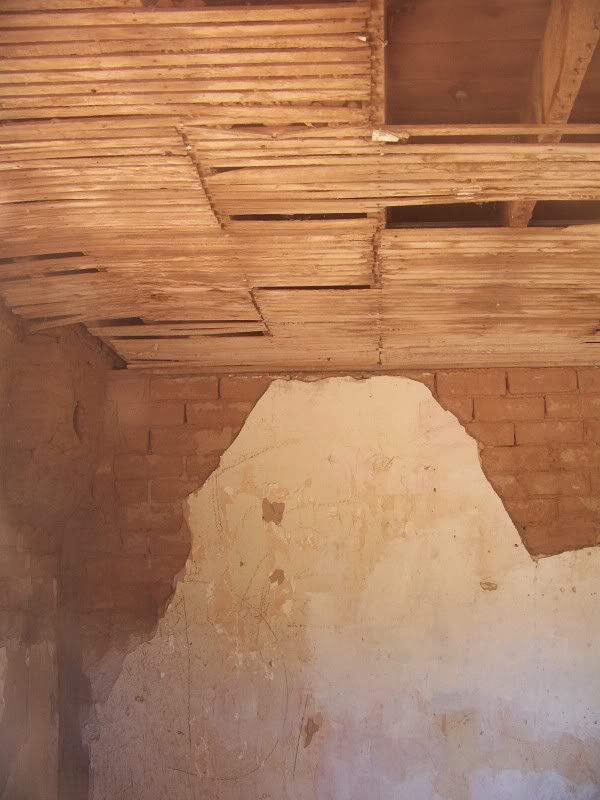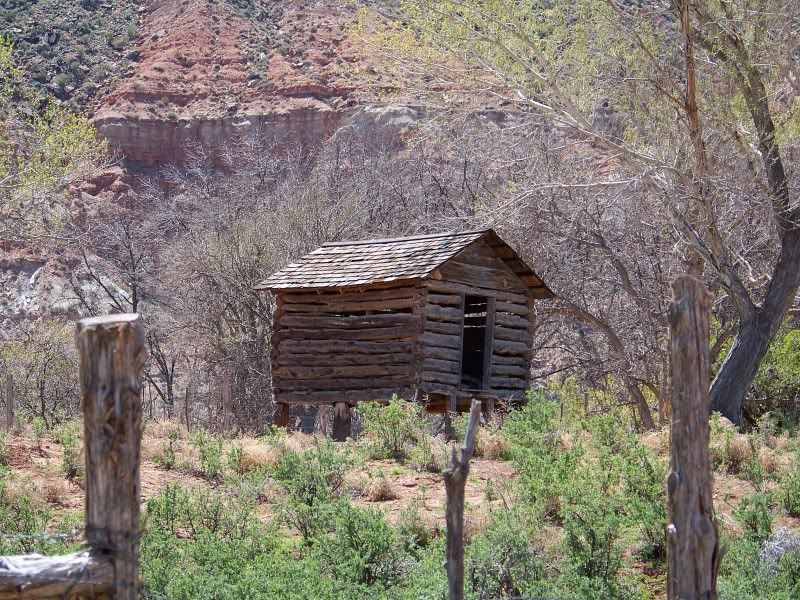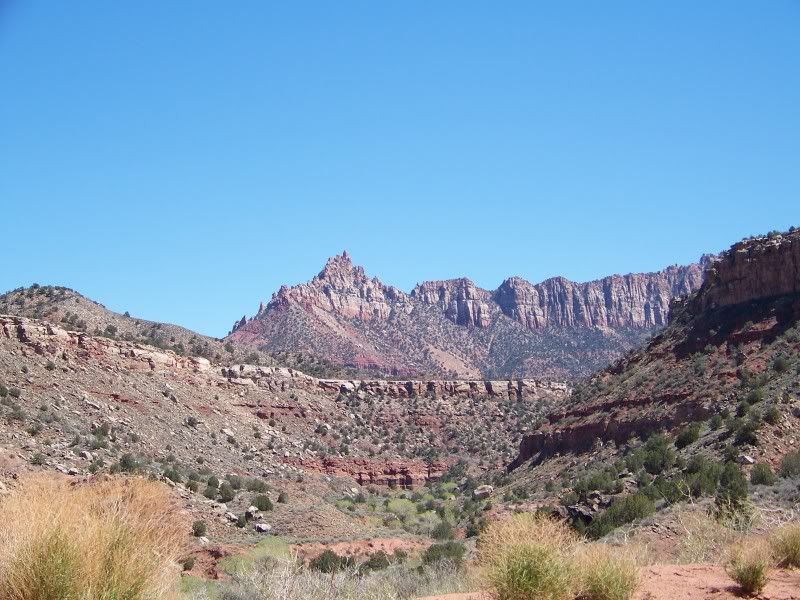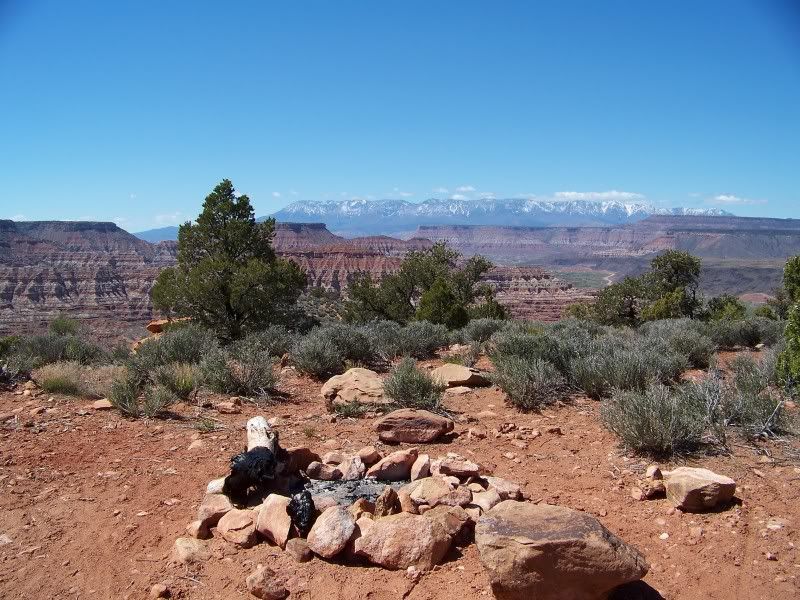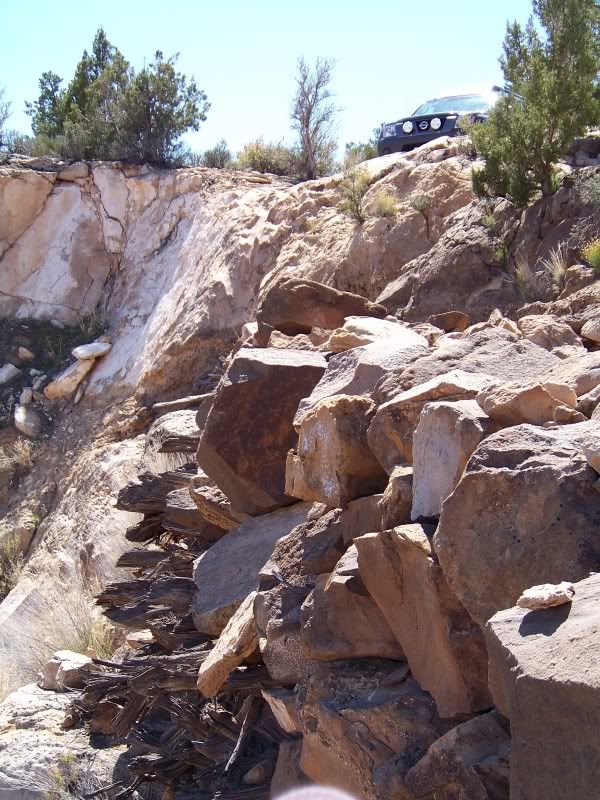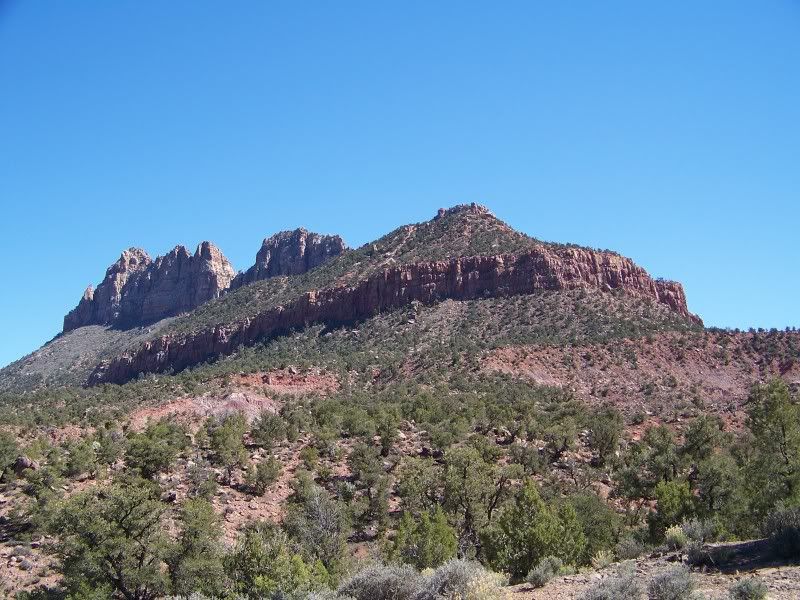I figured there’d be plenty of time to explore some Utah history while in/around Leeds for the weekend at Jacey’s grandparent’s; after we finished up with the furniture her gramps was building for us anyways. We headed out Sunday for Grafton, a well preserved ghost town along SR-9, just west of Rockville by a mile or two.
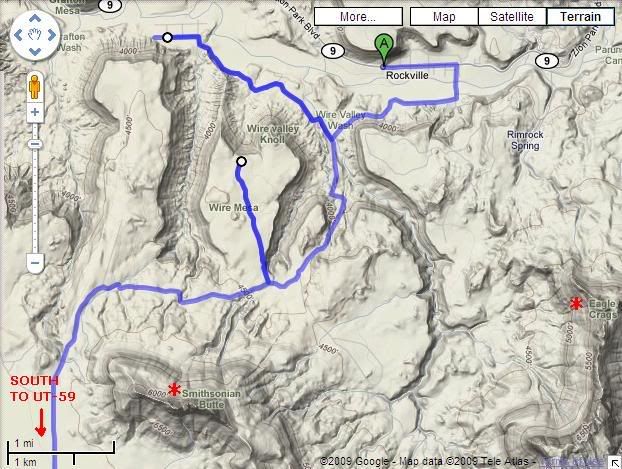
To reach Grafton, drive to the sleepy town of Rockville along UT9 and turn south on a side road (Bridge Lane) that crosses the Virgin River on a historic, single-track iron bridge, then turns due west. This soon becomes unpaved and follows along the foot of the low cliffs that separate the lush river valley from the arid rocky land beyond. After 2 miles the main road curves back south, climbs into the hills and becomes the Smithsonian Butte Road, a 9-mile scenic backway through a land of colorful mesas and canyons that eventually meets UT59 and so provides a useful short-cut between Zion National Park and the Arizona Strip, as well as offering many good free campsites. At the point where Bridge Lane bends south, a right turn continues roughly parallel with the river to the ghost town.
The first point of interest is the old cemetery - this has a few dozen graves from the period 1860 - 1910, with telling inscriptions that give some insight into the harsh life at that time, such as the three Berry brothers (and one wife), all killed by Indians on April 2nd 1866, or the five children of John and Charlotte Ballard, all of whom died young between 1865 and 1877, none living for more than 9 years. A track past the cemetery leads up the side of a sandy wash and has places to camp. Judging from the hundreds of expended cartridge cases, this is also a popular place for shooting at things.

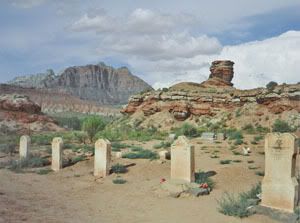
Grafton was established in 1859, to provide a settlement for people to grow cotton on the fertile plains next to the Virgin River, under the direction of Brigham Young; President of the LDS Church at the time. In January of 1862 the town was completely washed away by a flood. The people rebuilt the town a mile further up stream at its present site. By 1864 about 28 families lived here. There were many log houses, a post office, church, school and community hall. The town was deserted in 1866 due to Indian attacks. The people moved back in 1868. By 1920 only 3 families still lived here. Grafton has had parts of several movies shot here. One movie that was partly shot here was Butch Cassidy and the Sundance Kid.
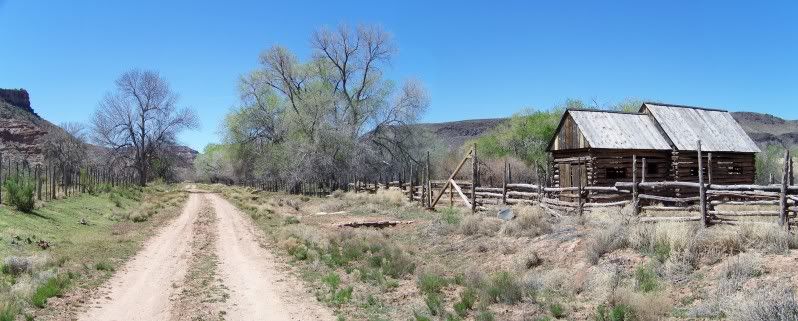
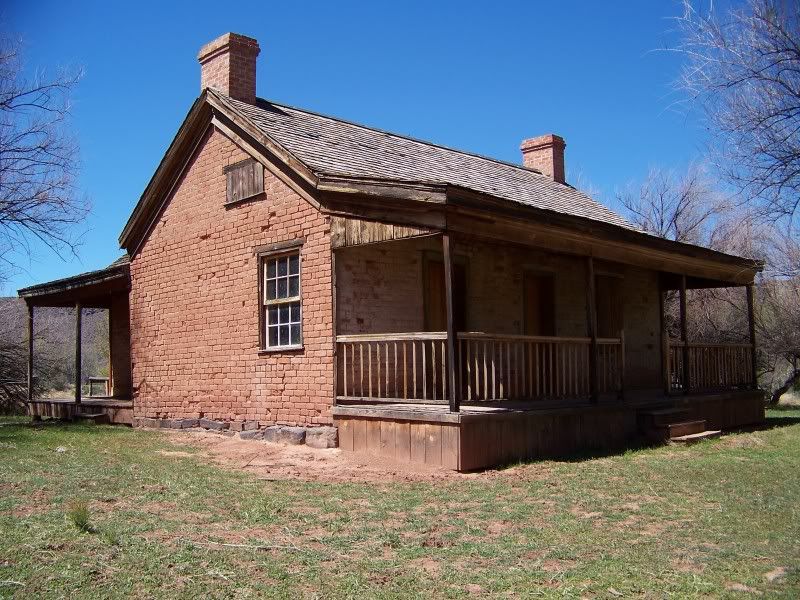
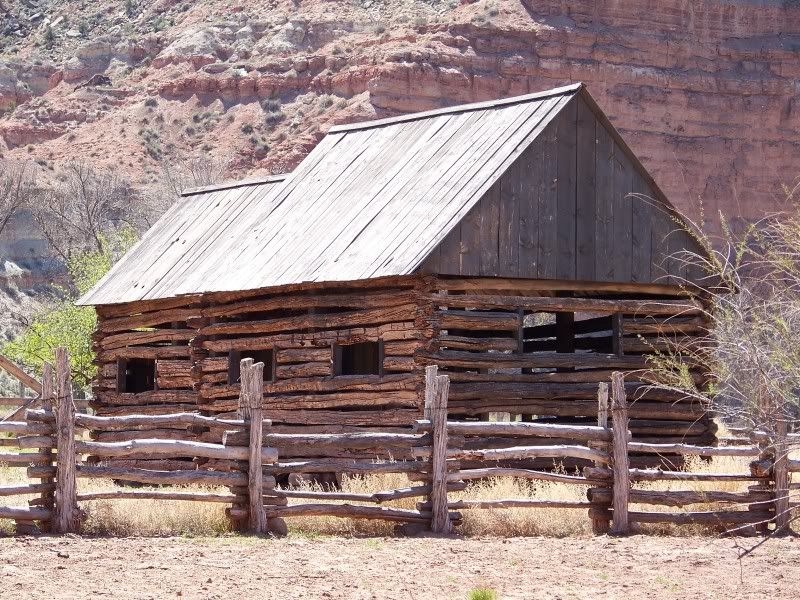
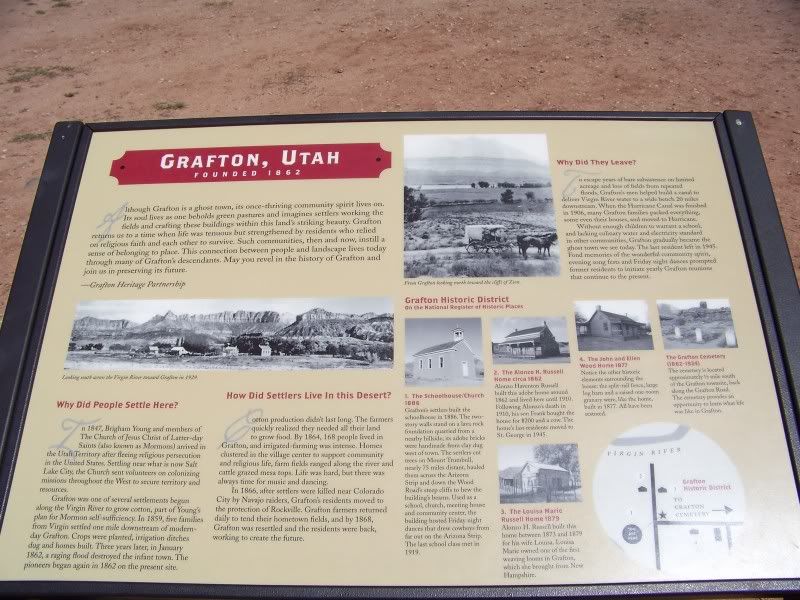
The town site is a few hundred meters beyond the cemetary - several large buildings including a 2-story private residence and a combined church/schoolhouse built in 1886. A few people continue to live in other houses in the neighborhood, and some parts of the former village are fenced off yet the site is still quite atmospheric and authentic, with peaceful surroundings and with the high, colorful cliffs of the National Park providing a dramatic backdrop to the north.
**Something to note about Grafton. The long road seen in the forth picture that i've posted actually continues on to many other cabins, barns, and other structures. These are closed and posted NO TRESPASSING. A quick search online can yeild a few pictures of some other structures in Grafton, that are not otherwise seen by the main public road. I also read online that there are some families currently living down that road. I'm not 100% sure about this, but we did see 2-3 vehicles drive through the gate and park 300yds down the road at a large, very ole cabin. So there might be truth to this.

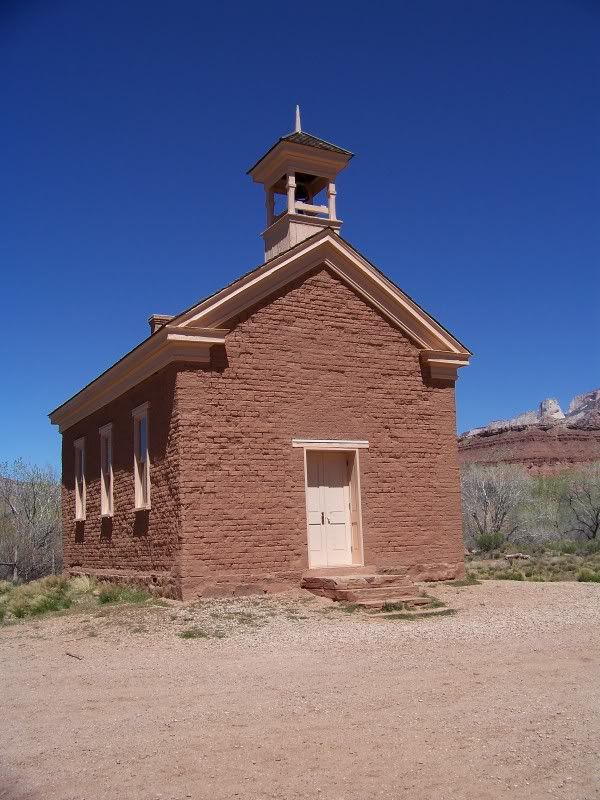


To reach Grafton, drive to the sleepy town of Rockville along UT9 and turn south on a side road (Bridge Lane) that crosses the Virgin River on a historic, single-track iron bridge, then turns due west. This soon becomes unpaved and follows along the foot of the low cliffs that separate the lush river valley from the arid rocky land beyond. After 2 miles the main road curves back south, climbs into the hills and becomes the Smithsonian Butte Road, a 9-mile scenic backway through a land of colorful mesas and canyons that eventually meets UT59 and so provides a useful short-cut between Zion National Park and the Arizona Strip, as well as offering many good free campsites. At the point where Bridge Lane bends south, a right turn continues roughly parallel with the river to the ghost town.
The first point of interest is the old cemetery - this has a few dozen graves from the period 1860 - 1910, with telling inscriptions that give some insight into the harsh life at that time, such as the three Berry brothers (and one wife), all killed by Indians on April 2nd 1866, or the five children of John and Charlotte Ballard, all of whom died young between 1865 and 1877, none living for more than 9 years. A track past the cemetery leads up the side of a sandy wash and has places to camp. Judging from the hundreds of expended cartridge cases, this is also a popular place for shooting at things.


Grafton was established in 1859, to provide a settlement for people to grow cotton on the fertile plains next to the Virgin River, under the direction of Brigham Young; President of the LDS Church at the time. In January of 1862 the town was completely washed away by a flood. The people rebuilt the town a mile further up stream at its present site. By 1864 about 28 families lived here. There were many log houses, a post office, church, school and community hall. The town was deserted in 1866 due to Indian attacks. The people moved back in 1868. By 1920 only 3 families still lived here. Grafton has had parts of several movies shot here. One movie that was partly shot here was Butch Cassidy and the Sundance Kid.




The town site is a few hundred meters beyond the cemetary - several large buildings including a 2-story private residence and a combined church/schoolhouse built in 1886. A few people continue to live in other houses in the neighborhood, and some parts of the former village are fenced off yet the site is still quite atmospheric and authentic, with peaceful surroundings and with the high, colorful cliffs of the National Park providing a dramatic backdrop to the north.
**Something to note about Grafton. The long road seen in the forth picture that i've posted actually continues on to many other cabins, barns, and other structures. These are closed and posted NO TRESPASSING. A quick search online can yeild a few pictures of some other structures in Grafton, that are not otherwise seen by the main public road. I also read online that there are some families currently living down that road. I'm not 100% sure about this, but we did see 2-3 vehicles drive through the gate and park 300yds down the road at a large, very ole cabin. So there might be truth to this.




